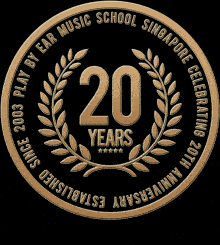
In every course of art, every classification or style has its own mastery e.g. in dance, music, calligraphy or paint. Interestingly, there are two common misconceptions about art:
The first misconception is that the modern contexts are usually less ‘superior’ to the founding eras. Everyone perceives contemporary art as spontaneous and extemporaneous. A less positive word to use is ‘casual’, compared to earlier days where art was perceived as being ‘serious’. How would you compare a Mona Lisa painting to the ‘Invisible art‘ of a plain white wall recently presented at an art exhibition? Or comparing the musical periods of Baroque (1600-1750), Classical (1750-1820) and Romantic (1810-1910) to today’s Pop, R&B and rock era? The truth is that subjectiveness is more than one can debate. There is never a loss of discipline in every genre, era, or style.
The second misconception is that art becomes ‘outdated’. Though literally it does mean so in certain respects, but the generalised people are constantly only moving ‘forward’ to what is new. ‘Trend’ and ‘art’ often get inappropriately associated and confused at the same time. For example, chasing for the latest album by Jay Chou and disregarding the older albums as obsolete. Sometimes, in the eyes of the modern society, it can be compromising for not following through with the “trend”.The word ‘old-fashioned’ explains it all, if you are wearing a dress that was designed in the earlier century. Only if you keep an open mind, one can see that there is no life-span to art, as to what is been regarded as the ‘in thing’ and what is considered as passé.
Evolution is inevitable. The practice of Arts do not change over the centuries. They diversify into new categories, new breeds and new creative interpretations. Like a plant that has growing leaves, each leaf represents a sub-genre of its own, while the roots of the plants stay in one. The point we are bringing here is that, learning and eventually mastering any one aspect of a genre will never contest with other genres within the same classification of arts. For example, you can learn hip-hop dancing and ballet at the same time or computer designing and traditional poster painting. You could also learn Pop Piano and Classical Piano together – it can never conflict. They will only complement each other. What this allows you to do is to acquire valuable skills from multiple ways of playing, without getting lost in the sea of possibilities. Learning Pop, Jazz and Classical at the same time will only fill the gaps that you have and nurture you into a well-rounded musician.
